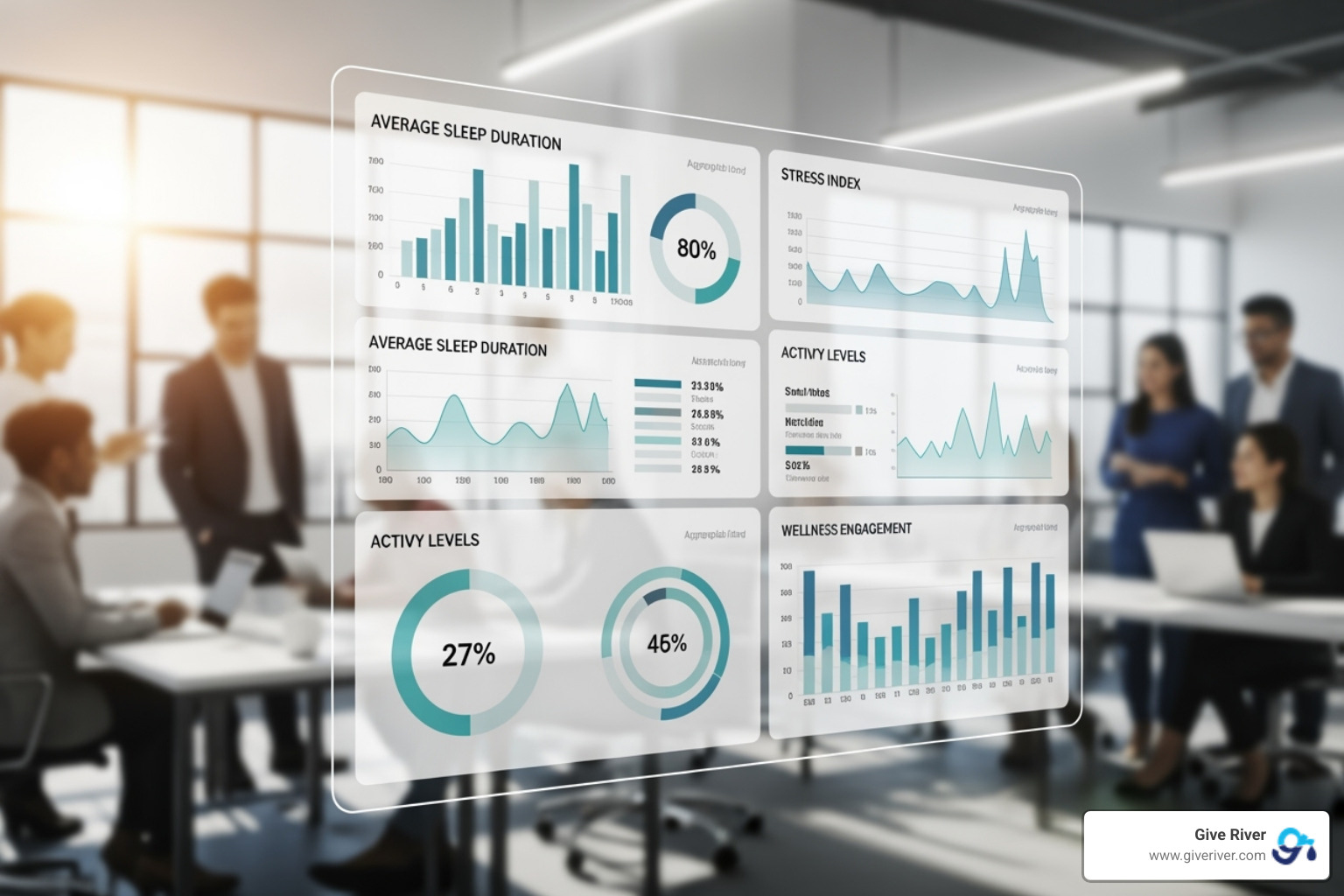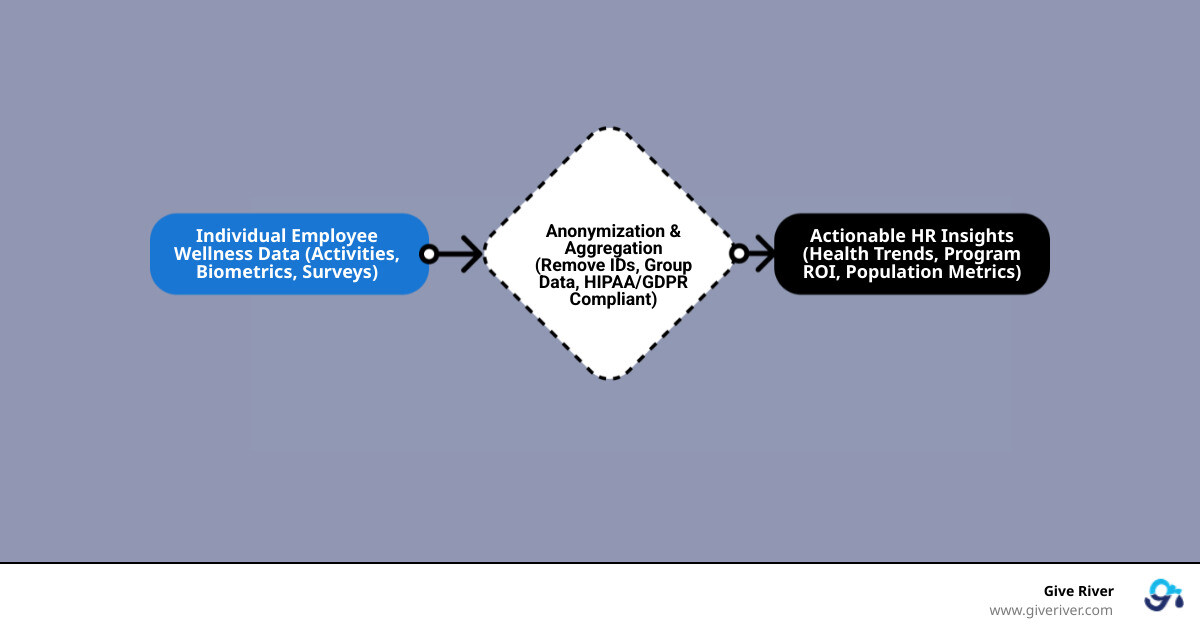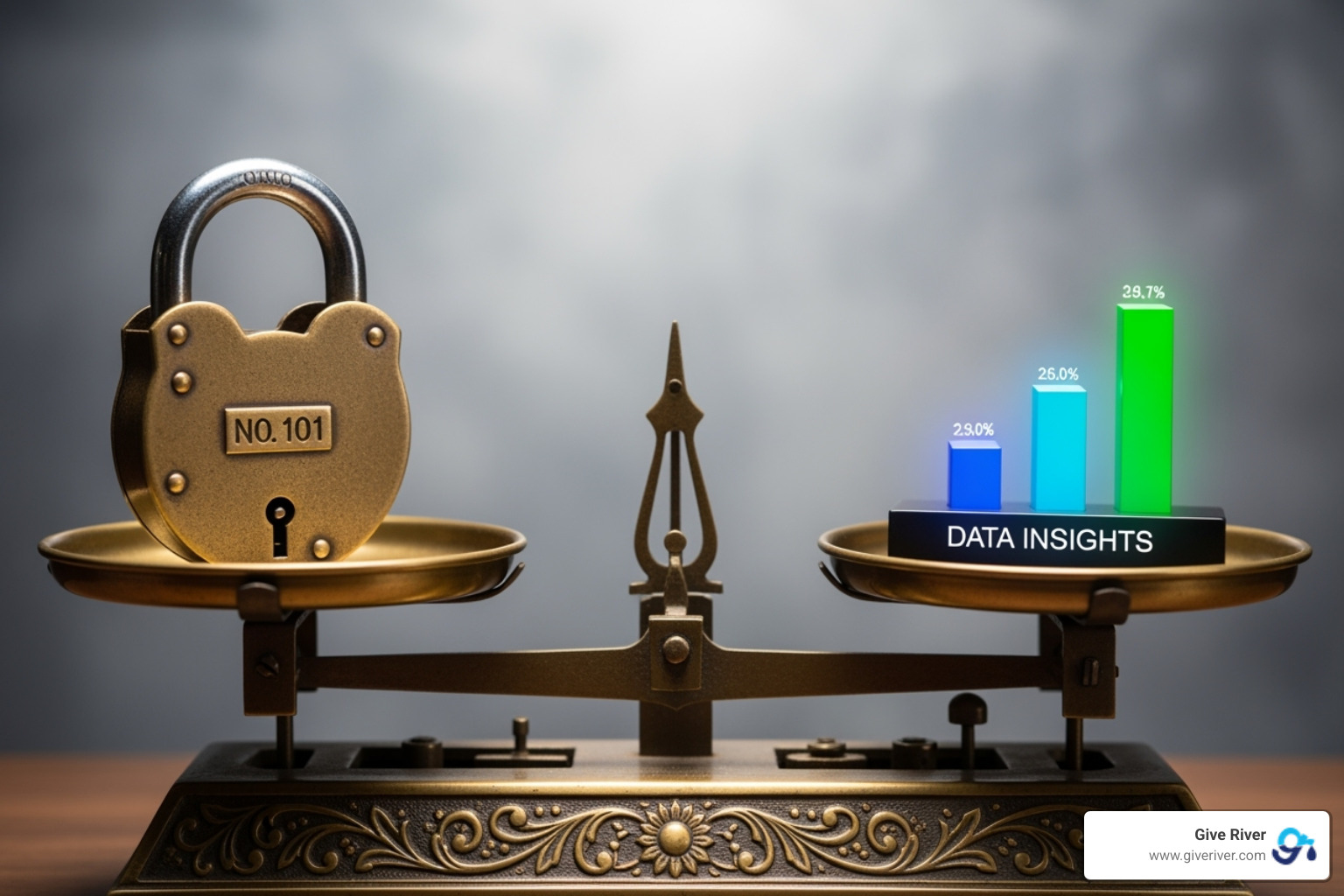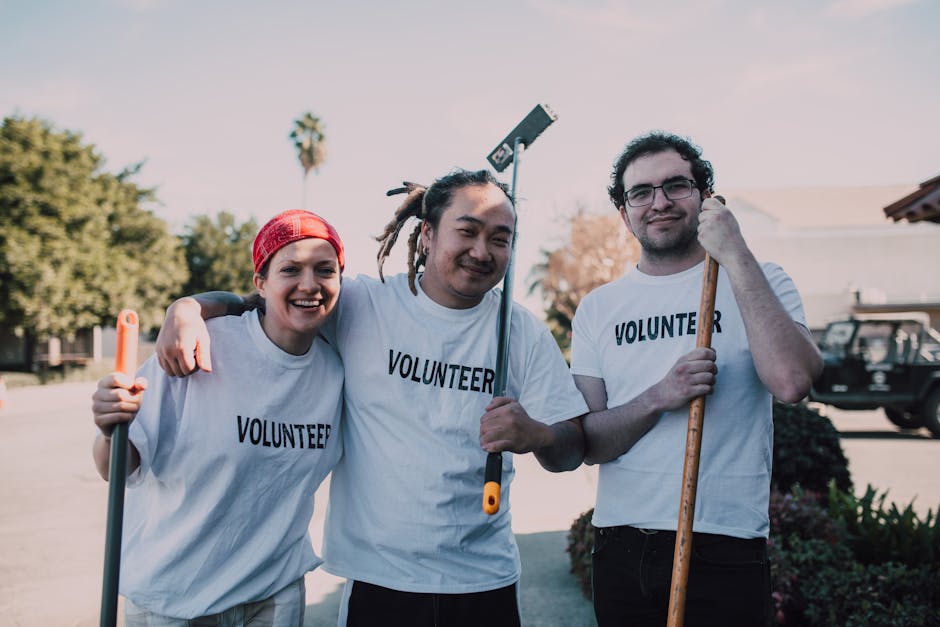A Comprehensive Guide to Wellness Platform Reporting Features
Unlock insights from wellness platforms anonymized employee health data reporting. Learn privacy, benefits & best practices.

The Power of Data in Employee Wellbeing
Imagine having the power to understand your workforce's health needs and measure the impact of your wellness programs, all while guaranteeing individual privacy. This is the promise of wellness platforms anonymized employee health data reporting. By collecting and aggregating data on activity, biometrics, and mental health, companies can gain invaluable insights to make data-driven decisions, reduce healthcare costs, and boost productivity.
The results are compelling: research shows that effective wellness programs can yield a 6-to-1 return on investment, with medical costs falling by $3.27 for every dollar spent. However, this data-driven approach presents a challenge. While 77% of employers see their programs as effective, many employees are wary of sharing sensitive information, fearing a loss of privacy.
This is where trust becomes paramount. While platforms like Bonusly or Kudos excel at employee recognition, they don't offer the deep, anonymized health analytics needed to shape a comprehensive wellness strategy. The most successful initiatives integrate robust data insights with a genuine commitment to employee privacy and holistic wellbeing. At Give River, we believe this balance is not just possible, but essential for creating a thriving workplace culture.

Similar topics to wellness platforms anonymized employee health data reporting:
A Deep Dive into Wellness Platforms Anonymized Employee Health Data Reporting
The journey from individual health data points to anonymized, actionable reports turns raw information into strategic insights—without compromising privacy.
What Health Data Is Collected and How Is It Kept Private?
Modern wellness platforms take a holistic view and typically collect:
- Activity Data: Steps, sleep patterns, heart rate during exercise—often from wearables and apps.
- Biometric Data: Height/weight (BMI), blood pressure, cholesterol, glucose—via HRAs or screenings.
- Mental Health Usage Data: Engagement with resources like mindfulness (e.g., Headspace for Work, Calm Business) or coaching—reported only in aggregate.
- Self-Reported Data: Lifestyle habits, stress levels, wellbeing surveys, and program feedback that add context to quantitative metrics.
Anonymization, De-identification, and Aggregation
- De-identified data removes direct identifiers (name, SSN) but may retain indirect ones (ZIP, birthdate), which can raise re-identification risks when combined with other sources.
- Anonymized data is processed so individuals cannot be identified—even indirectly—using techniques like generalization, suppression, and noise injection.
To deliver employer-ready, privacy-safe insights, platforms:
- Remove all personal identifiers.
- Aggregate data and report only on groups meeting a minimum threshold (commonly 5–20 people) so no individual can be inferred.
- Apply statistical safeguards to prevent reverse engineering of individual data points.
Measures That Prevent Re-identification and Protect Security
- Encryption in transit and at rest
- Role-based access controls
- Privacy by design embedded throughout the platform
- Contractual controls with third parties prohibiting re-identification or secondary use
- Regular audits and security testing (e.g., pen tests)
- Employee training for anyone handling sensitive data
Regulations and Guidelines
- HIPAA: Many wellness vendors are not directly covered unless part of a health plan or a covered entity. Clarity is essential so employees understand when HIPAA applies. See The HIPAA Privacy Rule.
- GDPR: Requires explicit consent and grants data subject rights (access, rectification, erasure) across the EEA and Switzerland.
- ISO 27001 and SOC 2 Type II: Common security certifications that validate information security practices.
For guidance on building trust and communicating these safeguards, explore Employee Wellness Best Practices.
The Double-Edged Sword: Risks vs. Rewards of Using Anonymized Data
The benefits of anonymized reporting are significant, but trust must be earned and protected.

Benefits
- Program optimization: Spot trends (e.g., rising stress) and target support accordingly.
- Proven ROI: Use population-level metrics to quantify reduced healthcare utilization and absenteeism.
- Better benefits design: Align offerings with real workforce needs rather than assumptions.
- Proactive interventions: Identify collective risks early and deploy preventative resources.
Risks—and How to Mitigate Them
- Re-identification concerns: Mitigate with strong aggregation thresholds, statistical noise, and clear vendor prohibitions on re-identification.
- Data misuse or discrimination: Limit use contractually to wellness improvement; audit vendors regularly.
- Eroding trust: Practice radical transparency—explain what is collected, why, who sees what, and how privacy is enforced.
- Inconsistent vendor practices: Vet rigorously for certifications (SOC 2/ISO 27001), privacy-by-design, and clear employee consent flows.
Handled ethically and transparently, anonymized reporting becomes a trust-building engine that helps organizations support wellbeing while respecting every employee's privacy.
The Power of Data in Employee Wellbeing
Imagine knowing what your teams need to thrive—not through guesswork, but through insights that respect everyone’s privacy. That’s the promise of wellness platforms anonymized employee health data reporting.
This approach helps you understand workforce health patterns and measure program success without exposing personal details. The building blocks are simple and powerful: privacy-safe data collection (activity, biometrics, mental health engagement, and survey responses), rigorous anonymization and aggregation (minimum group sizes of 5+), strong compliance (HIPAA context, SOC 2, GDPR), and clear reporting that turns trends into action.
The business case is compelling. Companies running effective wellness programs often see a 6-to-1 return on investment; for every dollar invested, medical costs can fall by $3.27 and absenteeism by $2.73. Yet while 77% of employers rate their programs as effective, many employees worry about data misuse.
Trust is the difference-maker. While recognition-only tools like Bonusly or Kudos boost morale, they lack the anonymized health data reporting needed to proactively address wellbeing trends. The most successful initiatives pair robust insights with a steadfast privacy stance and a holistic wellbeing strategy, integrating wellness analytics with broader employee experience programs to lift engagement, health, and performance together.
Similar topics to wellness platforms anonymized employee health data reporting:
A Deep Dive into Wellness Platforms Anonymized Employee Health Data Reporting
The journey from individual data to actionable, anonymized reports is where raw information becomes a strategic tool for improving employee lives while safeguarding privacy.
What Health Data Is Collected and How Is It Kept Private?
Wellness platforms gather a diverse array of data to get a holistic view of workforce health. This typically includes:
- Activity Data: Steps, sleep patterns, and exercise from wearables and apps.
- Biometric Data: Information from health screenings like blood pressure and cholesterol levels.
- Mental Health Usage Data: Engagement with resources like mindfulness apps (e.g., Headspace for Work) or stress reduction programs.
- Self-Reported Data: Voluntary feedback from surveys on lifestyle, stress, and wellbeing.
To protect privacy, this data undergoes a rigorous process of anonymization and aggregation. First, all personal identifiers (name, email, etc.) are removed. Then, the data is grouped into large, anonymous pools. Reports are only generated for groups of a minimum size (often 5-10+ employees), making it impossible to single out any individual. This is a critical step that distinguishes true anonymization from simple de-identification, which can still carry re-identification risks.
Reputable platforms further secure this data with end-to-end encryption, strict access controls, and adherence to regulations like HIPAA and GDPR. Certifications like SOC 2 and ISO 27001 provide third-party validation of a vendor's security and privacy practices, which is crucial since many wellness apps are not automatically covered by HIPAA. For more on this, see our guide to Employee Wellness Best Practices and the official guidance on The HIPAA Privacy Rule.
The Double-Edged Sword: Risks vs. Rewards of Using Anonymized Data
Leveraging anonymized health data offers significant advantages, but it's a balance of benefits and responsibilities.

Benefits of Anonymized Data:
- Program Optimization: Identify real-time needs, like rising stress levels or low physical activity, and tailor programs accordingly.
- Demonstrable ROI: Track metrics to prove the value of wellness initiatives, showing reductions in healthcare costs and absenteeism.
- Increased Productivity: A healthier, more supported workforce is more engaged and less prone to burnout, directly impacting Employee Wellness and Productivity.
- Strategic Benefits Design: Use insights to shape health benefits that truly address the needs of your employees.
Risks and How to Mitigate Them:
- Eroding Employee Trust: This is the biggest risk. If employees feel their data is unsafe, they won't participate. Mitigation: Radical transparency, clear communication, and an employee-first privacy policy are non-negotiable.
- Re-identification Concerns: While low with proper anonymization, the fear of data being re-identified is real. Mitigation: Partner with vendors who use robust aggregation and statistical noise techniques and can prove their security with certifications like SOC 2.
- Data Misuse: There's a risk of data being used for purposes other than employee wellbeing, such as marketing or discriminatory practices. Mitigation: Establish strict contractual agreements with vendors that limit data use exclusively to wellness program improvement.
The key is to choose a partner committed to ethical data handling, turning a potential risk into a powerful, trust-building tool.
Conclusion: Fostering a Data-Informed Culture of Trust and Wellbeing
The journey through wellness platforms anonymized employee health data reporting reveals a clear path forward: building a healthier, more engaged workforce requires using data to drive meaningful action while fiercely protecting employee privacy.
By changing individual data points into collective, anonymized insights, organizations can identify health trends, measure the impact of their programs, and prove the significant ROI of investing in their people. However, this power comes with the profound responsibility to maintain trust. The success of any wellness initiative hinges on employees feeling safe, supported, and confident that their personal information is secure.
This is why choosing the right partner is critical. While platforms like Bonusly or Kudos are excellent for peer-to-peer recognition, they don't provide the anonymized health data needed to measure and improve population wellbeing. A truly effective strategy must be holistic. Give River's unique 5G Method integrates wellness insights with recognition, personal growth, gamification, and community impact, creating a comprehensive ecosystem where employees feel valued and empowered.
Wellness platforms anonymized employee health data reporting is most powerful when it serves a culture of trust. When employees see that their collective data leads to better support and a healthier workplace, they become active partners in their own wellbeing. This creates a virtuous cycle where data informs action, action builds trust, and trust fuels a thriving, high-performing organization.
Ready to transform how your organization approaches wellness data? Learn more about our data-driven insights and find how Give River helps build happier, healthier teams through trusted, transparent wellness intelligence.




